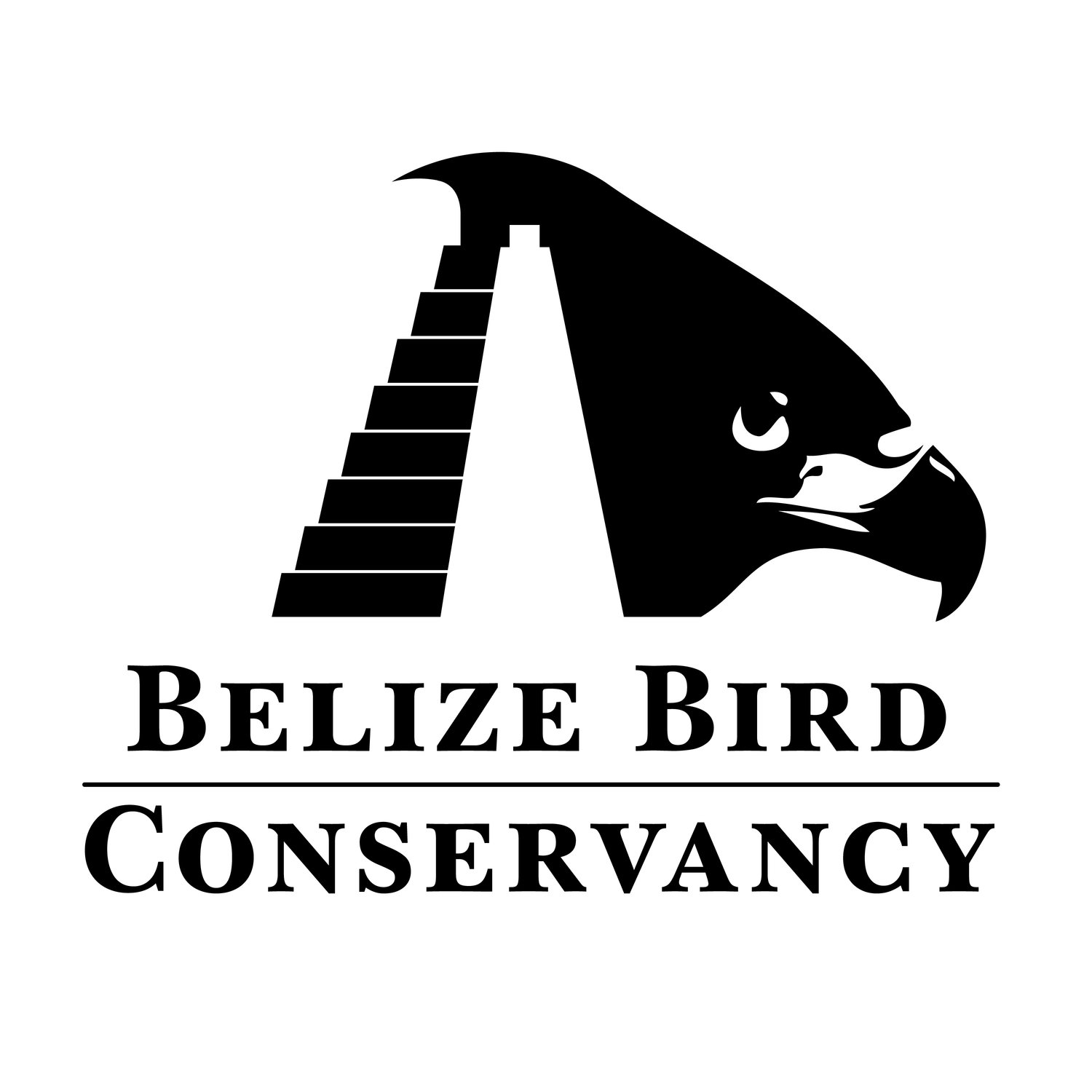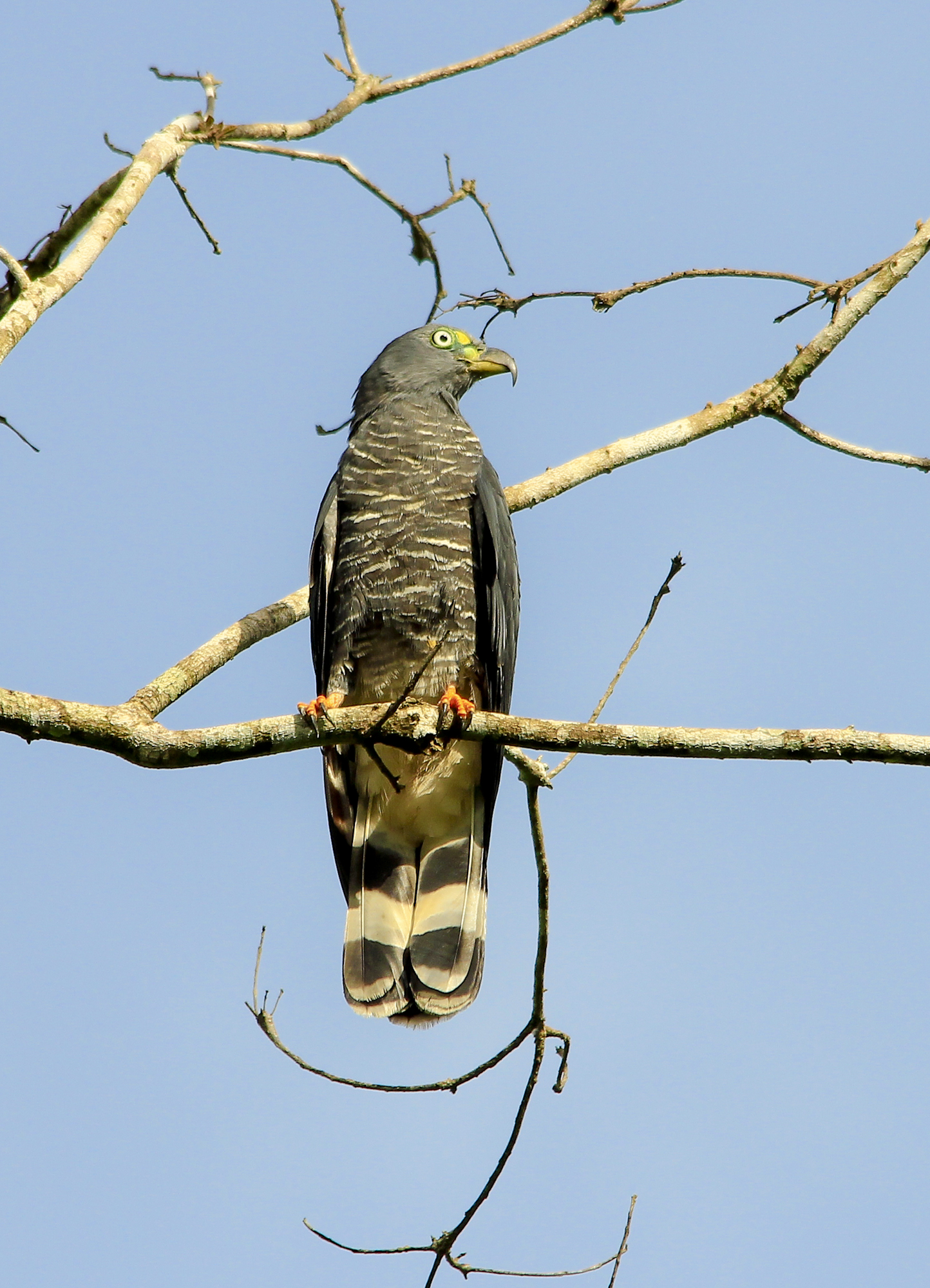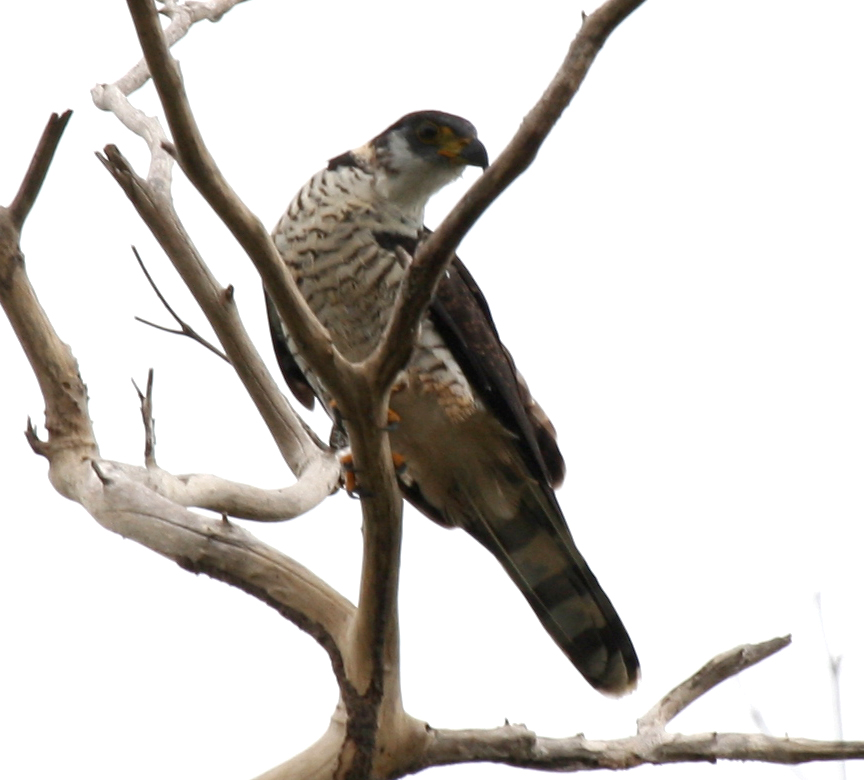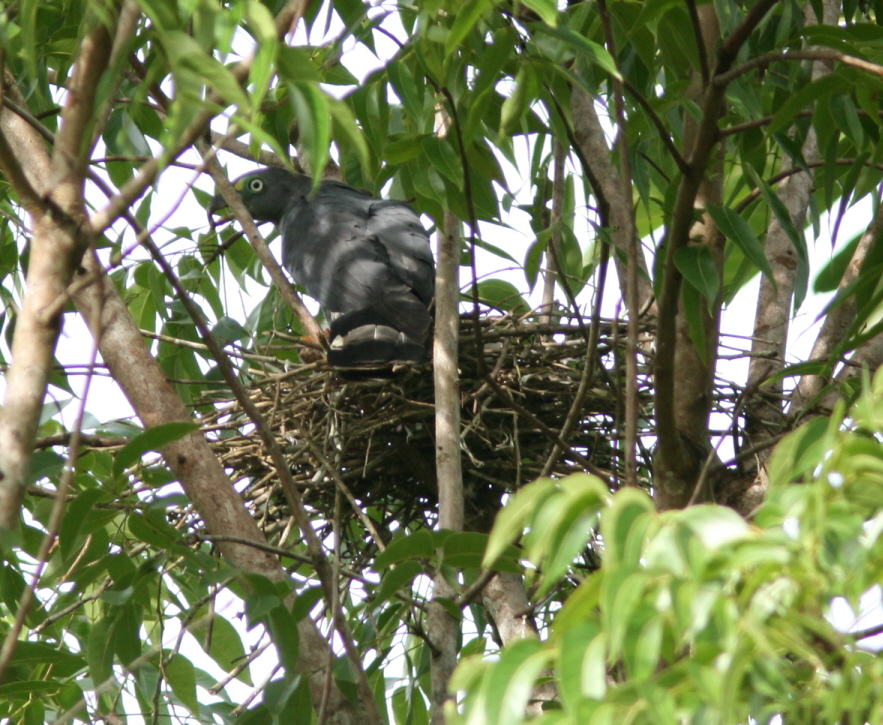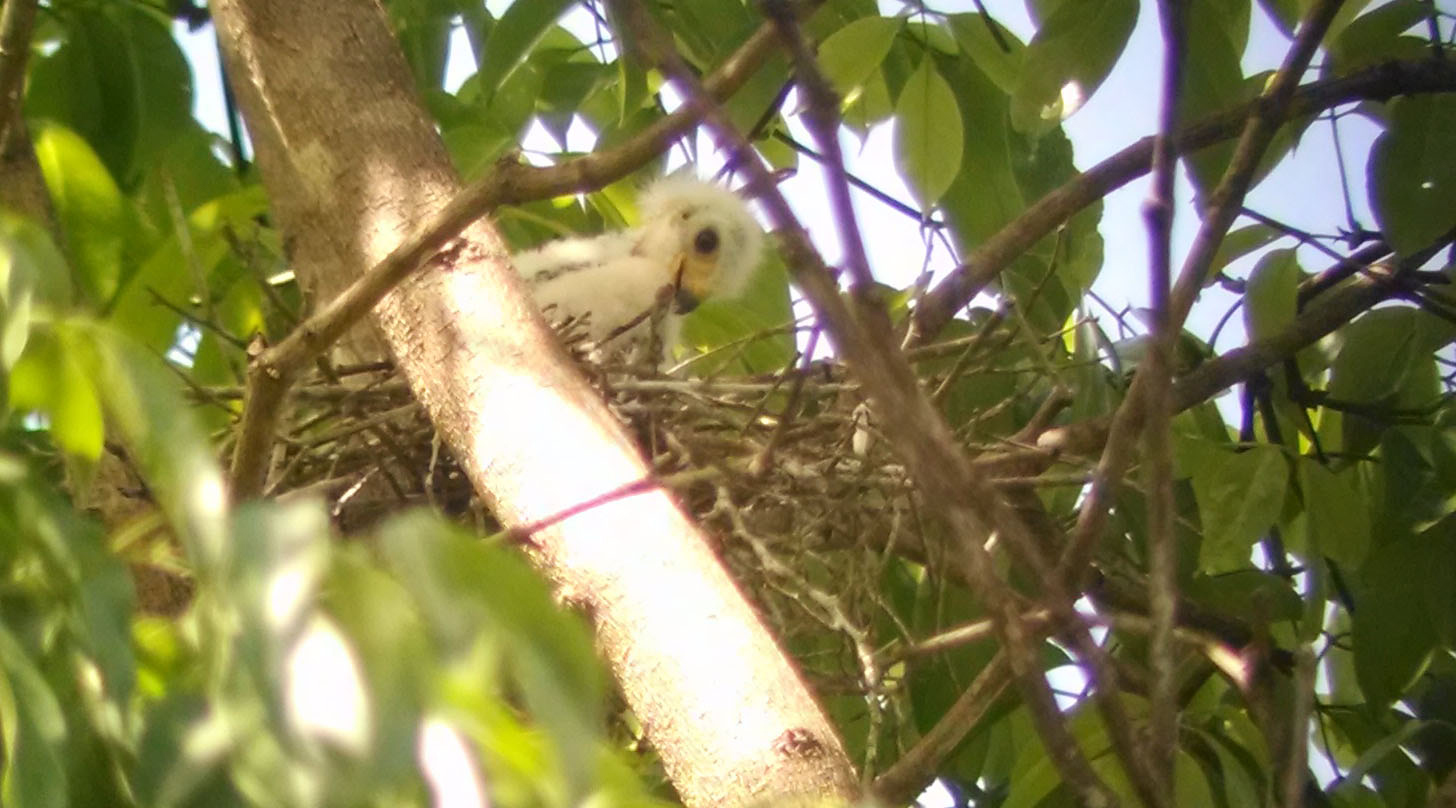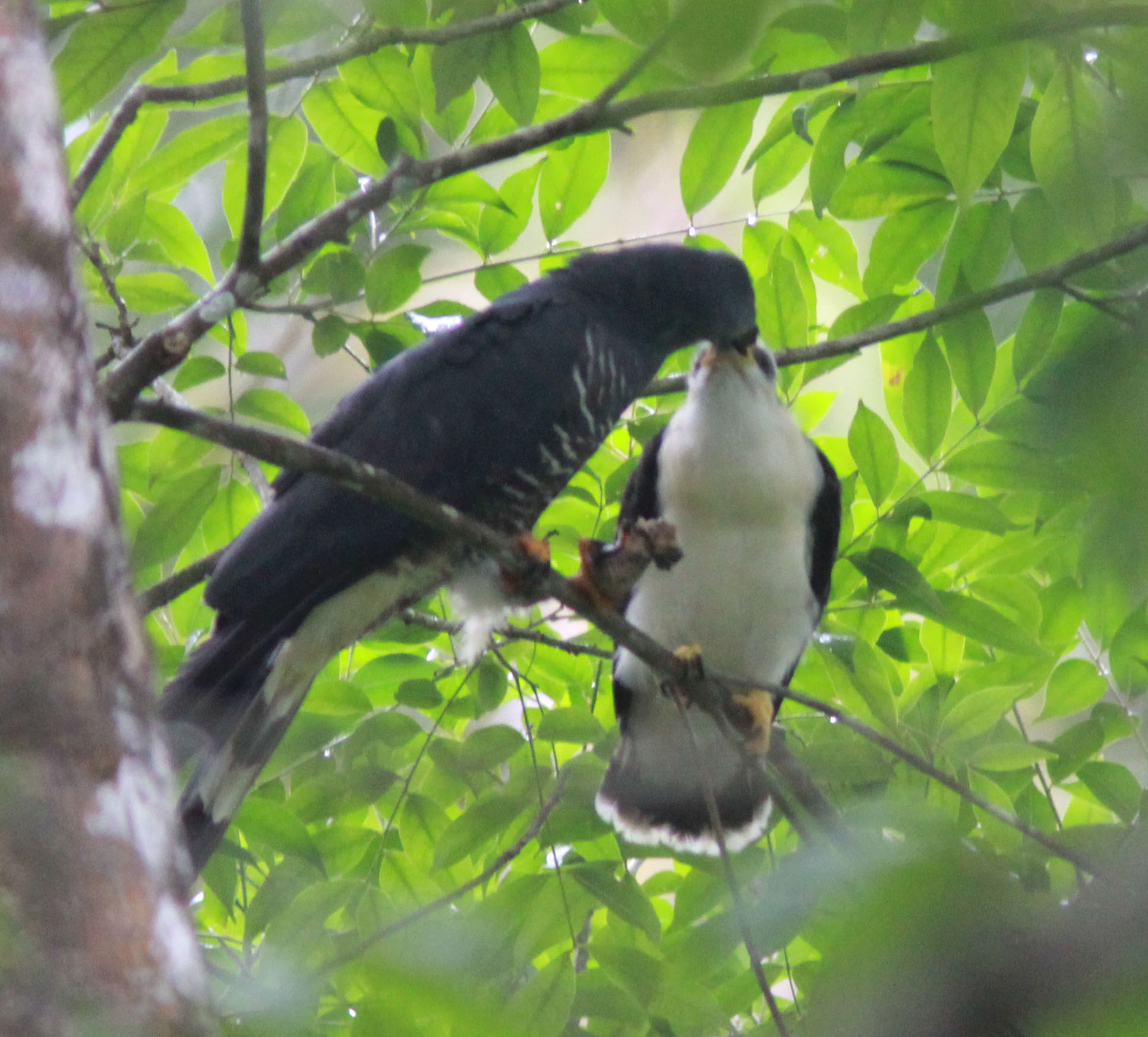Hook-billed kite project
Introduction
The Hook-billed Kite, Chondrohierax uncinatus, is a widespread species throughout the Neotropics in a variety of broad-leaved forest, but is generally uncommon, or local and rare (Ferguson-Lees and Christie 2001). Jones (2003) considers it a relatively uncommon resident in Belize, but a large southbound migration during autumn is observed. This species may be more common than originally thought due to its shy nature and forest dwelling ecology; but study is needed. The Hook-billed Kite is a little known species; only two thorough studies have been conducted. These include Smith and Temple’s (1982) analysis of the feeding mechanism and geographic patterns of plumage and bill size variation and The Peregrine Fund’s Maya Project where they studied four nesting attempts in Tikal National Park in Guatemala (Whitacre 2012). There are currently two subspecies that are recognized, one mainland race C. u. uncinatus and the Grenada race C. u. mirus. The Cuban Hook-billed Kite, once considered a subspecies, is now considered a separate species, C. wilsonii.
The IUCN considers the Hook-billed Kite to be Least Concern, but with a decreasing population trend (Birdlife International 2012). The Grenada population is estimated at 40 individuals or more (Whitacre 2012). Conventional wisdom states that Hook-billed Kites are sedentary and non-migratory, but Jones (GET NAB publication) observed 1,030 individuals migrating southbound through Punta Gorda in Belize during October and November in 2001. Jones estimated that at least 5,000 Hook-billed Kites migrate through southern Belize during fall migration. Where these kites are going and where they are coming from remains a mystery. This species has a very specialized diet of primarily snails, but other species such as lizards and frogs have been observed infrequently. Nesting for these kites commences late for Neotropical raptors in northen Central America, in April, when potential migratory birds arrive on their breeding grounds. The earliest nesting activity observed in this region was mid-March (Whitacre 2012).
Little is known and unclear about Hook-billed Kites including: habitats usage, migration and movements, prey ecology and breeding biology. These kites have a very specialized diet leading to high vulnerability of being impacted by human activities, such as climate change. This species warrants high study priority to assess its movements, breeding biology, ecology of prey, population status and threats.
Conservation and Research
Documenting baseline information of Neotropical raptors is especially important because, as top predators, they have a significant role in maintaining biodiversity throughout tropical ecosystems. In 2013, Belize Raptor Research Institute (BRRI) launched the Hook-billed Kite Project and the Belize Raptor Watch as long-term research and conservation projects. These projects aim to unravel the mysteries of the enigmatic Hook-billed Kite (Chondrohierax uncinatus), a highly specialized Neotropical raptor species, which ranges from the southern extreme of Texas to northern Argentina.
This is the first full-scale study conducted on the Hook-billed Kite and will provide valuable information, such as habitat utilization, breeding biology, foraging ecology, and migratory movements in order to assess the effects of environmental fluctuations over time. The primary study techniques include nest monitoring, transect surveys, habitat analysis, and prey monitoring, and will incorporate satellite tracking beginning in 2017. BRRI has monitored nests of breeding Hook-billed Kites since 2012 , and has observed undocumented breeding behaviors and a successful triple brooding (Phillips et al. unpublished), though the migration destination remains a mystery. Hook-billed Kite migration is not observed at the Costa Rica or Panama hawkwatch sites, so this information will be critical for natural resource management agencies of Central America and the scientific community.
Publications
